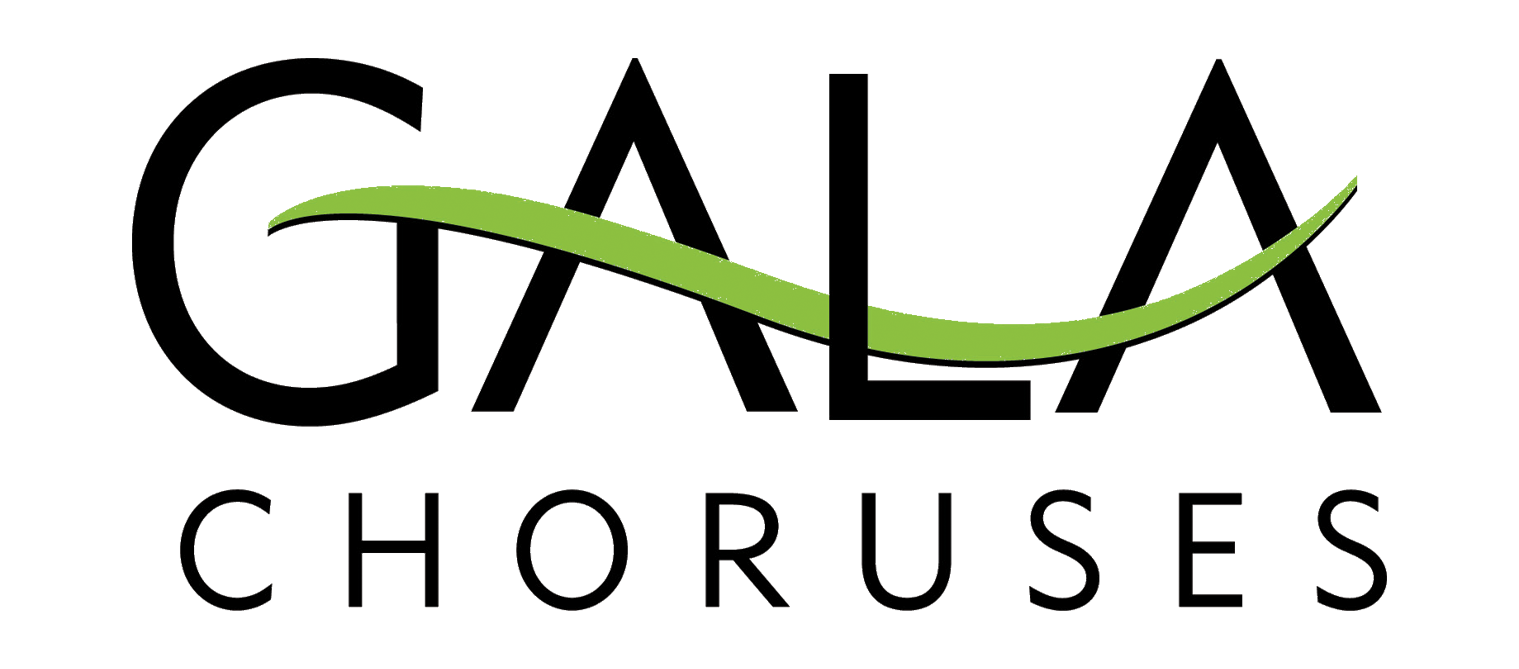By GALA Expert
November 29, 2023
- When posting for singer auditions keep language about voice parts gender-neutral.
- Include a rainbow sticker or other symbol as an LGBTQ ally in your chorus rehearsal space.
- In the audition setting, ask new and returning singers what pronouns they use and include this question on your audition form for each singer to fill out.
- Post signs for gender-neutral bathrooms in rehearsal and concert spaces. Educate your chorus and audience regarding the protocol and importance of gender-neutral restroom space.
- Use gender-neutral language in rehearsal and insist that all section leaders and singers also follow these same guidelines.
- Invite all singers to audition for any solo that fits their vocal range regardless of gender.
- Invite transgender and gender-non-conforming individuals, students, artists, speakers, and song writers to perform as guest artists in your concerts.
- Program songs by transgender and gender-non-conforming composers and song-writers. Share stories in your classroom that educate the student singers regarding gender nonconforming individuals in history or current day experiences.
- Examine requirements mandating gender-specific concert attire. Forcing singers into genderspecific (or incongruent) clothing may be seen as a public devaluing of identities and communicates indifference to the spectrum of gender identity and expression.
- Assign voice sections for each singer dependent on their voice range and voice color*. If a singer’s voice is still transitioning check their range every 3-4 months and assist them in moving to a new vocal part as needed.
- If a singer shares that they are transitioning via testosterone ask when they started and how the transition has affected their vocal range, etc. It will typically take 6-12 months for a singer’s voice to settle to a consistent range and can take up to 2 years to be reached.
* You may encounter a singer who requests to sing in a voice part that doesn’t fit their range. This request may come from a place of wanting to fit in with a traditionally “male” or “female” voice part. You can support this student by listening to their voice and talking about the importance of singing within a healthy range for each individual. It is all right to be clear that you assign all singers to sections based on vocal range.
More training videos and resources at:
www.GalaChoruses.org/teachers and www.GalaChoruses.org/trans
Also see: www.GalaChoruses.org/NewHarmony
Jane Ramseyer Miller, AD@GALAChoruses.org
With assistance from trans singers in a variety of GALA choruses
Is being transgender the same as being gay or lesbian?
Like all other people, transgender people can be gay, straight, lesbian, bisexual, or anything in between. Sexual orientation is different from gender identity or expression and cannot be assumed about anyone.
What does “transgender” mean?
Broadly speaking, transgender is an umbrella term for people whose gender expression and/or gender identity differs from conventional expectations based on their assigned gender at birth.
What does “nonbinary” mean?
Non-binary people are those who identify as a gender that is neither man nor woman or who are not men or women exclusively. Non-binary can refer to a specific gender identity or it can function as an umbrella term which can include (though not always) people who are genderqueer, agender, bigender, neutrois, and others.
Consider adopting guidelines for Gender language in your classroom or school. Here is an example:
GALA Choruses Gender-Neutral Language Statement
GALA Choruses strives for gender neutrality with regards to language in recognition of the many genders represented within our member choruses, singing sections and the LGBT community. When working and communicating with singers and choruses within the GALA community please keep the following guidelines in mind.
- Please refer to sections by voice part rather than gender, ie; tenors and basses rather than men or women.
- There are also gender inclusive ways that you can address a chorus as a whole. People or folks or simply everyone are more gender-neutral options (as opposed to Ladies and Gentlemen).
We know that gender specific language is a part of our culture and we don’t expect each individual to overcome years of conditioning overnight. We would, however, appreciate your attempt to address our members in the most gender-neutral way possible.
Tips for Allies of Transgender People
These tips can help you move toward becoming a better ally to transgender people. The list is not exhaustive and cannot include all the “right” things to do or say because there is no “right” answer to every situation you might encounter.
- You can’t tell if someone is transgender just by looking. If you don’t know what pronouns to use, listen and respect the terminology a transgender person uses to describe their identity.
- Don’t make assumptions about a transgender person’s sexual orientation.
- Don’t ask a transgender person what their “real name” is.
- Be careful about confidentiality, disclosure, and “outing.”
- Understand there is no “right” or “wrong” way to transition – it is different for every person.
- Don’t ask about a transgender person’s genitals, surgical status, or sex life.
- Challenge anti-transgender remarks or jokes in public spaces – including LGB spaces.
- Support gender neutral public restrooms.
- Actively make your company, place of worship or group truly trans-inclusive.
- Know your own limits as an ally. Don’t be afraid to admit when you don’t know something.
GLAAD updated May 2015 / Adapted from MIT’s “Action Tips for Allies of Trans People.” For the complete resource see: www.glaad.org/transgender/allies
